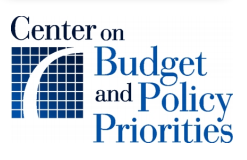
The Center on Budget and Policy Priorities released the following on July 30, 2012. Please visit http://www.cbpp.org/cms/index.cfm?fa=view&id=3811 for the full report and more information.
The tax cuts first enacted under President Bush in 2001 and 2003 have made the tax code less progressive and delivered a large windfall to the highest-income taxpayers.[1] Tax Policy Center estimates for the years 2004 to 2012 (the years for which TPC provides data that are comparable from year to year) give us a sense of the cumulative effect of these tax cuts:
- The average tax cut that people making over $1 million received exceeded $110,000 in each of the last nine years — for a total of more than $1 million over this period.
- The tax cuts made the tax system less progressive. In each of the nine years from 2004 through 2012, the tax cuts increased the after-tax income of the highest-income taxpayers by a far larger percentage than they did for middle- and low-income taxpayers. For example, in 2010, the year in which all of the Bush income and estate tax cuts were fully phased in, they increased the after-tax income of people making over $1 million by more than 7.3 percent, but increased the after-tax income of the middle 20 percent of households by just 2.8 percent.[2]
At a time of pressing fiscal problems and growing income inequality, continuing such large windfalls for the highest-income taxpayers is unaffordable.
The Highest-Income Taxpayers Have Received Immense Tax Cuts
The Bush tax cuts directed stunning tax benefits to high-income households over the last nine years:
- If one adds up the average tax cuts that households with incomes between $200,000 and $500,000 received in each of the last nine years, the total exceeds $74,000.
- The sum of the average annual tax cuts delivered to households with incomes between $500,000 and $1 million exceeds $189,000 over the last nine years.
- The sum of the average annual tax cuts delivered to households with incomes over $1 million in each of the last nine years exceeds $1.1 million. The average tax cut these individuals received was more than $110,000 in each of these years.[3]
Because individual taxpayers’ incomes vary from year to year (and some taxpayers die), not all taxpayers with income over $1 million in one year will be in that income bracket in another year.[4] And within any given year, no actual household may have the precise income and tax liability of the “average” household in a particular income category. But these figures illuminate the priorities reflected in the Bush tax cuts at a time when income inequality has already grown markedly and the nation faces unsustainable budget deficits after the economy recovers.
The Bush Tax Cuts Made the Tax Code Less Progressive
The Tax Policy Center estimates show that in each of the years from 2004 to 2012, the Bush tax cuts boosted the after-tax incomes of high-income households by a much greater percentage than they did for low-income households. For example, in 2010, the year in which all of the Bush estate and income tax cuts were fully phased in, the tax cuts:
- Raised the average after-tax income of the top 1 percent of households by 6.7 percent (or $66,618);
- Raised the average after-tax income of the top 20 percent of households by 4.6 percent (or $7,860); but
- Raised the average after-tax income of the middle 20 percent of households by 2.8 percent (or $1,039), and
- Raised the average after-tax income of the bottom 20 percent of households by just 1.0 percent (or $99).
The tax cuts also had similarly regressive patterns in the years before they were fully phased in (see Appendix 1).
Conclusion
In 2000, effective tax rates for both wealthy and middle-class Americans already were relatively modest compared to the tax rates in most prior decades.[5] However, budget surpluses were projected for decades to come, and the Federal Reserve Chairman warned that those surpluses could be so large as to cause economic problems. Policymakers cut taxes aggressively in 2001 (and again in 2003), particularly for the highest-income people. Those taxpayers have since enjoyed tax-cut windfalls. The average tax cuts for people making over $1 million a year surpassed $110,000 in each of the last nine years.
The budget surpluses are long gone, and the current fiscal trajectory is toward unsustainable budget deficits. Addressing those deficits is going to require wrenching choices. Americans across the country may be forced to sacrifice in various ways, from paying more for college to facing higher-out-of-pocket health costs, with potential consequences for some Americans with modest incomes in terms of access to higher education and to health care services. Needed investments to infrastructure are likely to be shorted, as well. Basic health and scientific research may be squeezed.
Policymakers need to consider the extension of the Bush tax cuts in this context. If the tax cuts on incomes above $250,000 ($200,000 for single filers) expire, the wealthiest taxpayers will still have enjoyed a decade-long windfall, and the top two tax rates will return to those of the 1990s, when the economy grew robustly, tax rates on high-income taxpayers still were lower than in most prior decades, and both corporations and small businesses thrived.

